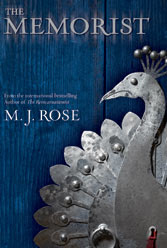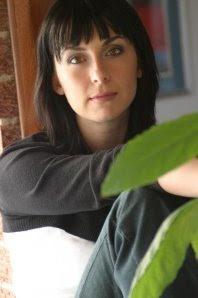I would like to thank Danielle at Sourcebooks for sending me Mr. and Mrs. Fitzwilliam Darcy: Two Shall Become One by Sharon Lathan, which is now available in select Target stores and will be released everywhere else in March.
Mr. & Mrs. Fitzwilliam Darcy is a scintillating novel that will have readers blushing right alongside Elizabeth Darcy as she and her husband embark upon the rest of their lives as a married couple. Mrs. Darcy gets acclimated to life as Mistress of Pemberley, while her husband relishes his wife’s attentions and delights in helping her fit into his world without losing the passionate and independent woman he loves.
“Darcy attacked the superb provisions with relish and Elizabeth was not too far behind. They had fun with the process: feeding each other morsels, licking and sucking each other’s fingers, kissing honey-smeared lips. Eventually even Darcy’s appetite was quenched, and with a satisfied sigh, he reclined on an enormous pillow. Elizabeth leaned against his bent knee and gazed dreamily into the fire. Neither spoke.” (Page 37)
This novel provides an look at the intimacy this classic couple shares behind closed doors and away from society’s prying eyes. Readers will begin to feel like voyeurs as they become drawn into Pemberley’s world and the coupling of Elizabeth and Fitzwilliam Darcy. In the background hovers the ominous presence of Lady Catherine and the rumors she spread about Elizabeth Darcy and her future, detrimental affect on Pemberley and the Darcy name. The word play between these two characters continues and is a delight. It’s fantastic to see Col. Fitzwilliam return as well and inject his wit as well.
“Darcy greeted his cousin heartily. ‘Darcy, old man, you are positively beaming! Married life surely agrees with you,’ Col. Fitzwilliam decreed.
‘More than I could possibly verbalize, cousin. Someday you must give up your reckless bachelor ways and discover the joys of matrimony.’
Richard shuddered. ‘Not too hasty, Darcy, not too hasty. Mrs. Darcy, if I may be so bold, you are radiant. Shocked I am, to tell the truth,’ he said, with a sly glance at Darcy. ‘Personally, I thought you would be weary of this old codger by now!'” (Page 147)
Readers will find this romance novel stays true to the original Austen characters and develops their relationship more fully within the bounds of matrimony and society’s conventions. It is good to see Mr. Darcy soften with the help of his wife, learning to laugh and interact with others with less rigidity, and it is equally as fascinating to see Mrs. Darcy garner maturity in his presence, while continuing to blossom as a woman and wife. One drawback for me in this novel was the absence of conflict until the very end of the novel and some readers may find the sexual tensions and actions of these beloved characters too intimate at times. Overall, this is a good romance and a great way to spend an afternoon or two in wedded bliss with Mr. and Mrs. Fitzwilliam Darcy.

Sharon is a married, RN, specializing in neonatal intensive care. She is a native Californian who married her very own Mr. Darcy. Two Shall Become One evolved after Lathan watched Pride & Prejudice on the big screen, starring Kiera Knightley and Matthew MacFadyen.
***Look Forward to Sharon Lathan’s guest post and giveaway on March 10***
Also Reviewed By:
Diary of an Eccentric
Becky’s Book Reviews
The Book Nest
Book Zombie









 Miriam at Hatchette Group sent Cross Country by James Patterson for my review. However, while I’ve been an avid James Patterson reader for some time, I decided to have the biggest James Patterson fan I know review it. My mom, Pat, offered to review the book for me. I’m sure my review will follow sometime in 2009.
Miriam at Hatchette Group sent Cross Country by James Patterson for my review. However, while I’ve been an avid James Patterson reader for some time, I decided to have the biggest James Patterson fan I know review it. My mom, Pat, offered to review the book for me. I’m sure my review will follow sometime in 2009.








 Thanks to the authors–
Thanks to the authors–



